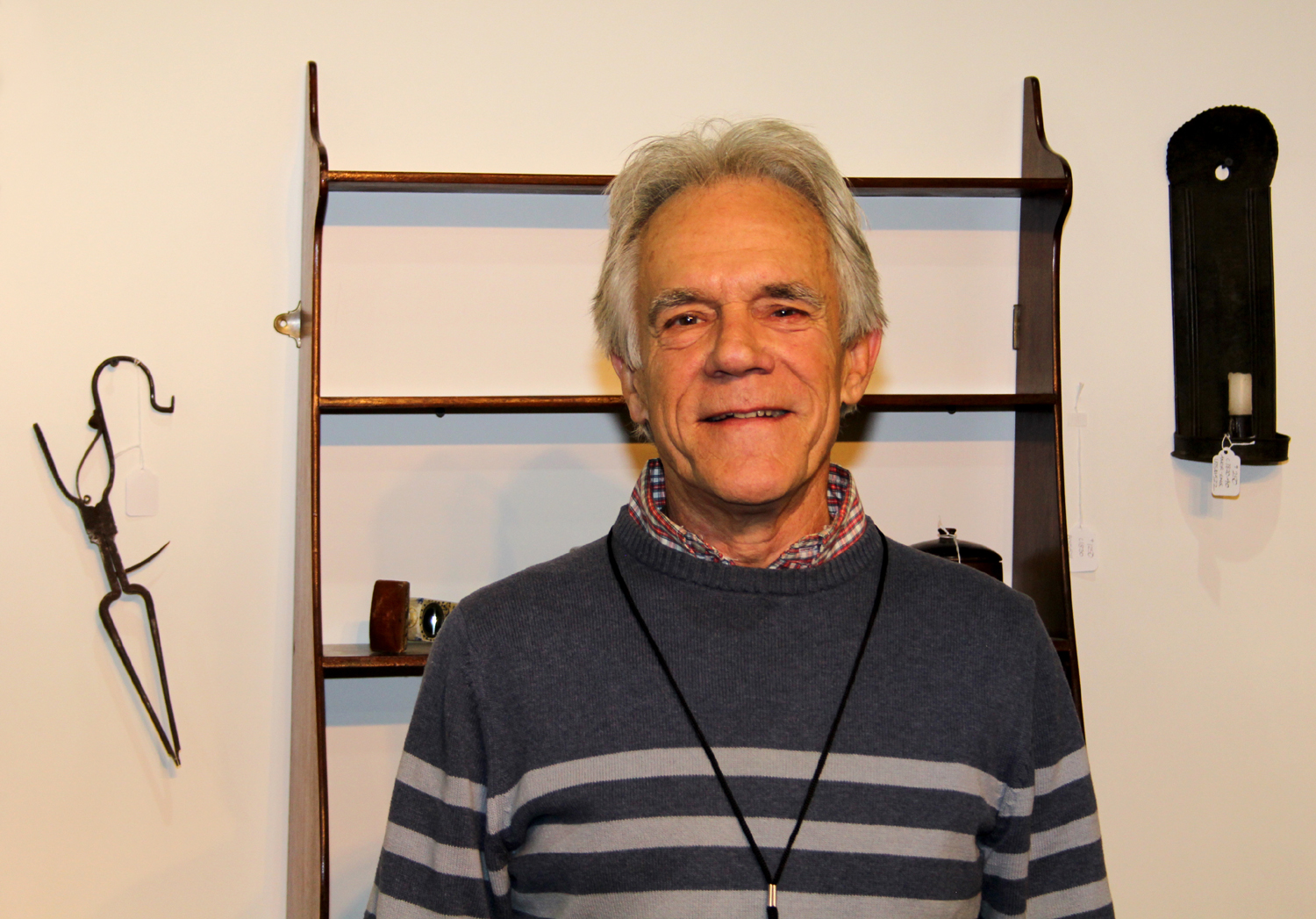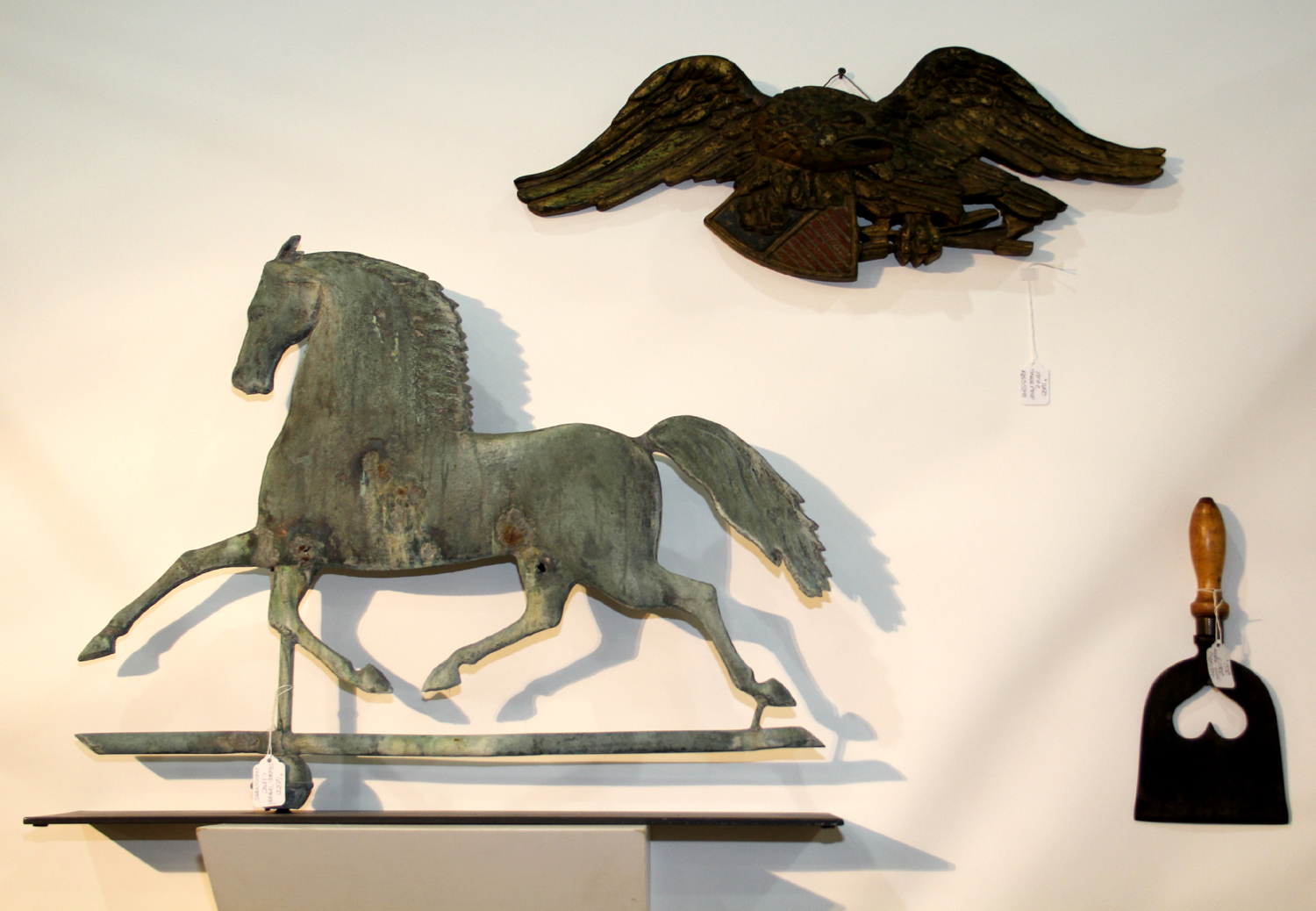Readers have likely been intrigued, if also a tad mystified, by Doug Ramsay’s weekly invitation to “Shop Naked.” The mildly salacious suggestion is the tag line of a new advertising campaign and revamped website launched by the longtime dealer in American folk art. We caught up with Ramsay in Pennsylvania at the Greater York Antiques Show on April 30. He described the origins and intent of his initiative and hinted at what buyers will find at www.dbrantiques.com.
Were you always into antiques?
My parents collected and carted us around to auctions. My twin brother, David, is also a dealer but is now mostly retired. I had no interest in antiques as a child.
How did your career begin?
I moved to Nova Scotia in 1969. I’d been studying in Boston at the School of the Museum of Fine Arts. Art students weren’t getting draft deferments, so I left for Canada. A faculty member I’d worked for got me a job in Halifax with the chairman of the psychology department at Dalhousie University. That helped me meet Canadian immigration requirements.
When did you start dealing?
After a couple of years, I opened an art gallery with my ex-wife and another couple. We used antiques as props. Old story — no one wanted the contemporary art. Instead, it was, “How much is the deacon’s bench?” So I put prices on the furniture, got rid of the art, and put up a sign for an antiques shop in St Margaret’s Bay on Nova Scotia’s South Shore. It was a little village of 231 people. Except for us, everyone had the same last name. I was selling refinished pine and polished brass and copper to retail people who were coming through in the summer. We were on the tourist route and got 120 cars a day.
How did you become “the happy stripper”?
Around 1974, I opened a dip-stripping shop in Halifax and ran it for a year. I rented a vacant three-story building, a former fruit market, in a corner location. The daily newspaper was across the street. A reporter had me pose in my apron and boots with my high-pressure wand. The story appeared on the front of the paper’s second section under the headline “The Happy Stripper.” I was booked solid from the day we opened. It was a busy, little shop.
How did your taste evolve?
A local antiques dealer, Murray Stewart, became my mentor. He suggested that if I got something in old paint he might like to purchase it. It made me more cautious about putting things in the dip tank. I got rid of the shop, started picking the countryside and selling wholesale. I bought a 50-acre farm in Queens County and, later, a 140-acre farm outside New Glasgow on the Strait of Northumberland. I settled in the Connecticut River Valley of Massachusetts in 1978.
What was business like for you in the late 1970s?
I got lucky and fell in with people who were active. For instance, I picked a lot of material for Mary Page, a high-quality, high-volume dealer in Warner, N.H., who sold to everyone. It wasn’t uncommon back then to see Corey Daniels at Mary’s place, or Scott Bassoff, Steve Rowe or Dale Pregent. Pregent was later elected mayor of Keene, N.H., but back in the day he was an excellent picker.
What did you sell?
I dealt primarily in American paint decorated furniture in the 1980s and 1990s. As that market began declining in the 1990s, I started focusing on handheld objects, pieces with sculptural or graphic appeal: carvings, paintings, pantry boxes, weathervanes, doorstops, hooked rugs, game boards, decorative tools and lighting. I’ve never paid a dollar for a dish. I don’t deal in things I don’t know. Wood and metal serve me well.
How has your business changed?
I stopped working as picker, which was a 400-mile-a-day occupation. I do a lot less driving and sell very little retail. My clientele is still mostly dealers and collectors who want the dealer price. I started doing shows about seven years ago.
How did the “Shop Naked” campaign come about?
I got the idea last summer and launched the revised website in January 2016. So far no hate mail and lots of people seem amused. The peculiar thing about it is that you never really know what will get a response. For instance, I recently posted an African American figural cast iron broom holder by F.E. Allen, circa 1900, that caused a stir. Websites are time-consuming. Before, I spent a lot of time on the road. Now I’m happy to spend it in front of a computer.
—Laura Beach






